|
I visited Paula Doyle this week in her lovely studio in Staines to work on a thread-painted portrait for a Magna Carta quilt installation. Her group is making four Medieval quilts and four Legacy quilts; these will be displayed at the Magna Carta's 800th anniversary celebrations at Runnymede. Afterwards, the quilts will go on display at Guildford Cathedral for National Armed Forces Day, and will continue to travel to other venues across the UK and possibly the USA. 80 thread painted portraits will be featured on the Legacy quilts. Here I am just about to start stitching a portrait of Angelina Jolie. The copyright-free image was digitized on Paula's computer, and then printed onto Transfer-Eze in five shades: from black to gray to white. I peeled the Transfer-Eze portrait off the backing paper and smoothed the sticky back onto the gold fabric. The gold background fabric was stiffened using Terial Magic Spray--this spray made the fabric stiff enough to be stitched without a hoop, and it washes away completely when the Transfer-Eze is dissolved after the portrait is finished. _ I thread painted the image using free-motion machine embroidery with the feed dogs dropped, starting with black and working with progressively lighter threads. This is as far as I got on Monday. When I got home, I continued stitching until I was happy with the result. I then cut away the excess Transfer-Eze from around the image and soaked it in cool water. The Transfer-Eze dissolved away, as did the stiffening. After ironing, this is what the portrait looks like: Each portrait will be cut into the shape of an oak leaf and appliqued onto one of four panels featuring oak trees. These are symbolic because oak trees are rooted in the Magna Carta Baron’s shields. Here is a close-up of the stitching. Just like an Impressionist painting, it looks better from a distance! The key message of the Magna Carta is about human rights, so Paula's group chose human rights heroes and heroines to represent the ongoing legacy of the spirit of the original document. The Magna Carta quilters selected people who are or were advocates for all aspects of human rights, from anti-slavery, to education, to women’s rights, to gay rights, to native rights, to freedom of speech, and so on. I also took the portrait of Oscar Wilde to thread paint. Here is the finished result. and here is a detail. Paula will be demonstrating this technique on Justhands-on.TV when they film her next week, so keep an eye out for the show. Also, be sure to watch the Magna Carta celebrations at Runnymede because you'll certainly see images of the complete installation. What a wonderful project and an excellent way to bring quilts to a wider audience.
7 Comments
This was originally published in The Quilter magazine in 2003, but I have had a number of requests to reprint the article for people who haven't read it. So here it is! Unadulterated, but still relevant.
Although this column is meant to represent my views and I’ve been given carte blanche to write whatever I like, I have been approached independently by several quilt lecturers who have asked that I discuss the experiences of a speaker. Having been a speaker myself for well over a decade, I could relate to many of their views, and feel it’s time to set the record straight. Many quilt groups meet in the evening, say 7:30 for 8 PM. As a speaker, one feels obliged to arrive early so that slides, screens and quilt samples can be in place by the time the group assembles. Depending on where a speaker is coming from, this means leaving hours early and either depending on a map or British Rail to manoeuvre your way there. For a 7:30 start, it is not unusual to leave home at around 5:15. So, unless one has a very early dinner, this leaves little or no time for food: one thing that most groups don’t even consider is their speaker’s meal. I learned early on that it was basically “bring your own sandwich or starve.” How I appreciated those groups who realised this and made arrangements for me to have a quick bite at a member’s house before the talk, or those that provided a sandwich and cup of tea in a quiet place while they helped set up my slides. I know I gave a better talk as a result simply because my blood sugar level was on an even keel! I have a problem driving in the dark and am hopeless with maps, so I usually took a train to my engagements. However, many of my fellow lecturers DO drive and have been in despair of ever finding their destination because of bad maps or poor directions. Once there, they’d find there was no reserved space to unload their samples and equipment…..Groups should have a standard set of maps and directions that have been checked for accuracy, and provision should always be made for their speaker’s parking needs. Speakers often wonder why they are completely ignored once everything is set up. Is the group afraid of them? Grinning at people and hoping for some conversation is usually met with a blank stare. Groups: make an effort to welcome your guest lecturer—you wouldn’t invite someone to your home and then ignore her, would you? And speaking for most quilt lecturers, I’d say there is a certain element of nervousness before a talk—it’s only natural. Breaking the ice and talking in a casual way with your speaker will make her feel more welcome and relaxed before her talk. The meeting commences, announcements (sometimes interminable!) are made, and then it is time for the lecture. It isn’t unusual for the Chair to simply call the speaker’s name, often mispronouncing it (it’s Soo werd, not Sea ward!). I always sent a short biography of myself hoping that I would be properly introduced, and it made such a difference when a formal introduction was made. It’s amazing how many groups have dodgy slide projectors, or don’t have extension leads or extra bulbs. When a talk depends on slides, these are crucial to the success of the evening and should always be double-checked beforehand. I would say that the aspect that many speakers dislike most about their job is being dropped off at a train platform at around 10:30PM and gaily waved goodbye. Then the long wait, often in the dark, for the train that sometimes arrived on time, sometimes didn’t. (How grateful I was to those groups who provided someone to wait on the platform with me until my train arrived.) And although I know that speakers are being paid, and are choosing to come to speak to a group, spare a thought for them still making their way home, either by train or car, while you are tucking yourself up in bed. A midnight return after leaving the house 7 hours earlier is not out of the ordinary—this also puts the fee into perspective! It’s amazing how infrequently a thank-you note is sent, but those that are received are very much appreciated. (I have saved every one of mine.) I wouldn’t say that I actively resented any of the above during the years I lectured regularly, but gradually over time I realised that I wasn’t enjoying myself anymore. I loved the actual speaking, meeting the groups and seeing their work—(Show and Tell is such a wonderful and necessary part of a quilt evening—don’t give it short shrift!). But it was mainly the travelling and its associated problems and uncertainties that I didn’t relish. I’ve heard that groups are finding it difficult to book talented speakers. As with anything in life, if you want to keep a good speaker happy and wanting to share her expertise with your group, respect her, treat her with kindness and thoughtfulness and then thank her for what she’s done. It makes all the difference. ***************************************** Apologies to male guest speakers! There weren't any that I knew of in 2003, but this is, of course, relevant to everyone! My framed landscape of a Zanzibar beach has been featured in the April 2015 issue of British Patchwork & Quilting magazine. I love the close-up photography they have done! I've made a limited number of these landscapes in different colours and they are for sale. Do contact me if you are interested in buying one!
This article originally appeared in the Spring 2015 issue of The Quilter magazine. I've had a number of requests from tutors for an internet link to the article, so I'm going to post it here. I hope it helps people to understand just what is entailed in being a speaker and/or teacher. Comments more than welcome!
©2015 by Linda Seward I have been giving talks to quilt groups for many years. Generally, I have met wonderful, enthusiastic people and been given a warm and appreciative reception. But not always. In 2003 I wrote what has since become a notorious article entitled Let’s Put the ‘Guest’ Back into ‘Speaker’, where I gave some suggestions about how to treat the person coming to talk to your group. I’ve just re-read it, and it is still relevant today, so perhaps my editor may wish to re-run it in a future issue for those of you who weren’t members of the Guild in 2003. Anyway, there has been a lot of chat lately on social media about prices that speakers/teachers (henceforth referred to as tutors for brevity) are charging for talks and workshops, and I have been asked to bring up the subject in an effort to clear up a few mysteries surrounding pricing and the hiring and/or cancellation of outside tutors. Let’s talk about pricing first. The days when we can expect to pay someone a small fee for coming to speak to a group are over. Those who are just starting out might charge less just to get experience, but if a group wants a professional who is going to provide a stimulating talk and/or workshop, it needs to pay for it. Consider the amount of work that goes into giving just a one hour talk: The presentation must be written, checked and rehearsed to ensure that everything works and makes sense. If actual quilts are to be shown, they must be packed carefully so they aren’t damaged. Items for sale must be gathered and packaged. The venue needs to be located. Time must be allowed for travel and setting up, so even a one hour talk means carving out a window of at least 3-4 hours, often more, depending on traffic or train times and distance. I spend 6-8 hours preparing for and travelling to every one-hour talk—that is the equivalent of a full working day. So when a price for a talk is given and rejected because it is too high, groups must realize that they are not merely paying for one hour but also for time and experience. The same goes for workshops. (And it is particularly humiliating to be queried about a fee when already at the venue, which happens all too often.) Those who are in charge of booking tutors for talks and/or workshops know that they need to operate about a year in advance to secure the person and date that they want. It is then up to the group to ensure that the lecture is well attended and the workshop is filled through publicising the event and encouraging members to take part. Again this needs to be done well in advance, as we are all busy these days and schedules fill up before we know it. However, it is not unknown for groups unable to fill a workshop to cancel with little notice. Tutors depend on the income from the classes they have fitted into their schedule. If that is suddenly taken away at short notice, that slot will be nearly impossible to fill, with a substantial loss of income. Because this has become such a problem, some tutors are asking groups to sign a contract when they are hired. This binds the tutor to the job, but more importantly, protects the tutor from financial loss due to cancellation. I encourage tutors and groups to use contracts—this is in everyone’s interest. In order to get the cheapest rate on travel fares, tutors often need to book months in advance, in which case, it seems only fair that the group pre-pay the fare. Then, if the class is cancelled, the tutor is not out of pocket. And, of course, mileage should always be paid if a tutor is driving; the standard rate for mileage is now 45p per mile, which can add up if the tutor is driving a long distance. Tutors realise that this is a big additional cost, which is why many prefer to combine several talks and workshops in one trip, spreading the cost around. This makes sense, but it also puts the tutor in an even worse bind if someone cancels in the middle of the tour. Some tutors supply kits for their workshops, which entails a significant outlay of both time and money. If the workshop is then cancelled or numbers are low, the tutor is seriously out of pocket. I haven’t even gone into what it feels like personally to get a cancellation or speak at a poorly attended talk. It can be really depressing and humiliating. Of course, the shoe is sometimes on the other foot and some tutors cancel at the last minute or just forget to show up. I have been known to get up and talk at some meetings when the speaker hasn’t turned up! Thankfully, this happens rarely. I don’t want this to turn into an ungracious rant because most of the time, groups are lovely and treat their tutors beautifully. But it’s in everyone’s interest to p(l)ay fair when it comes to hiring tutors so that everyone is happy. Please note the change of dates. The gallery will be on from Thursday March 19th through Saturday March 21st. I am hoping to be there much of the time, but won't be there personally on Saturday morning. The address is at the bottom of this post.
Here is another piece that I made for my gallery at Lady Sew and Sew in Henley-on-Thames. It's called Zanzibar Boat 1, and is 12" wide by 8" high. Here is a detail: It is one of a series of photos that I took in Zanzibar. I printed the photos on canvas, then embellished them with hand and machine embroidery, couched threads, beads, pearls and seashells. No two are alike! I hope you'll stop into the gallery at Lady Sew and Sew's warehouse on Farm Road in Henley-on-Thames RG9 1EJ next week, from Wednesday the 18th through Saturday the 21st of March.
I will be setting up a gallery at the Lady Sew and Sew Warehouse in Henley-on-Thames. It will be open from Thursday March 19th through Saturday March 21st. Here is one of the pieces I made to sell in the gallery. It's called Zanzibar Beach 1, and it is 15 1/2" wide x 13 1/2" high. Here are two details. The image is my own photo printed on canvas. I have embellished it with hand and machine embroidery, couched textured yarns, beads, pearls and seashells. It is wrapped around a wooden frame. The gallery will feature many of my quilts, both old and new, traditional and contemporary. I will be there from Thursday to Saturday to answer questions and help with any problems you might have with your quilting, so do bring along your own work. I'd love to see it! Also, I am giving a talk about my new book on Thursday evening, March 19th at 7:30pm. If you wish to book a ticket, go to the Lady Sew and Sew website, warehouse events. Here is a link:
http://ladysewandsew.co.uk/warehouse-events-lady-sew-and-sew/ I am delighted with the article Anne Williams wrote about me in the February issue of Popular Patchwork. See page 26 for the article. Very pleased!
I had a lovely time on Monday night giving a talk to the London Quilters, my favourite group, bar none! Here are just two photos taken by Dr. Deborah Gubler, our house-guest for a month, to show what it was like after the talk was over. It was really just like having a conversation with old friends and I enjoyed it very much. Thanks for asking me, LQ!
If you copy this link into your browser,
http://www.justhands-on.tv/ you will be able to watch an internet TV show that talks about some of my new pieces and the people I worked with when writing my new book. You'll also be taken on a tour of my workroom. I hope you enjoy it! |
Archives
March 2023
Categories
All
|
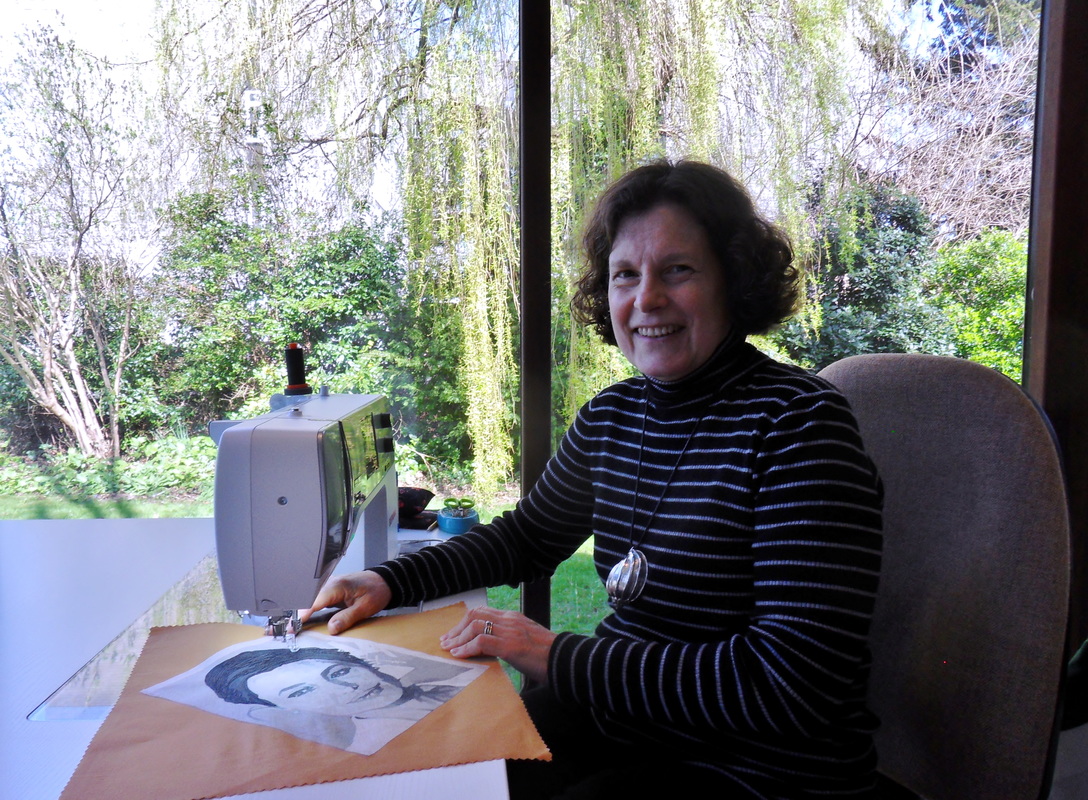
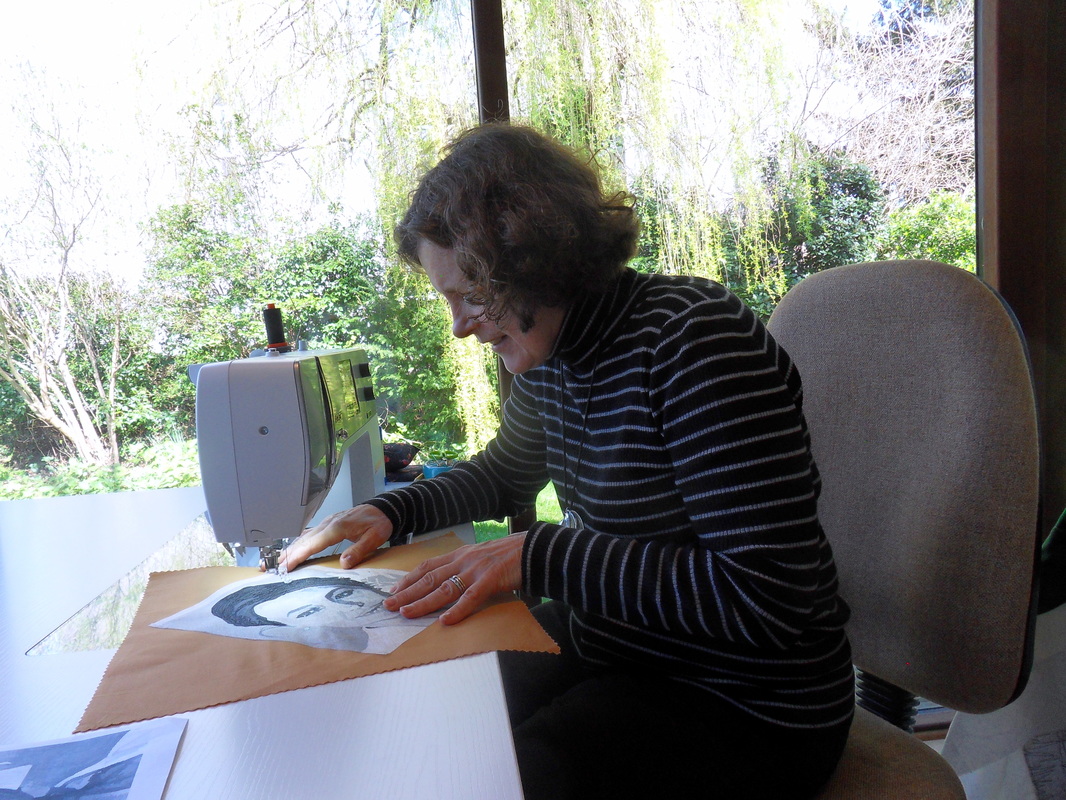
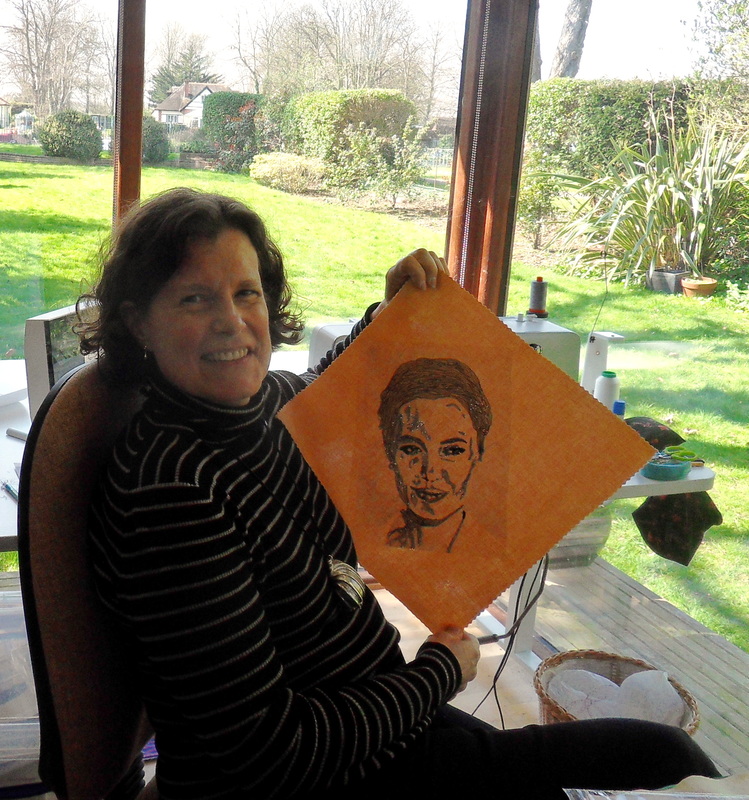

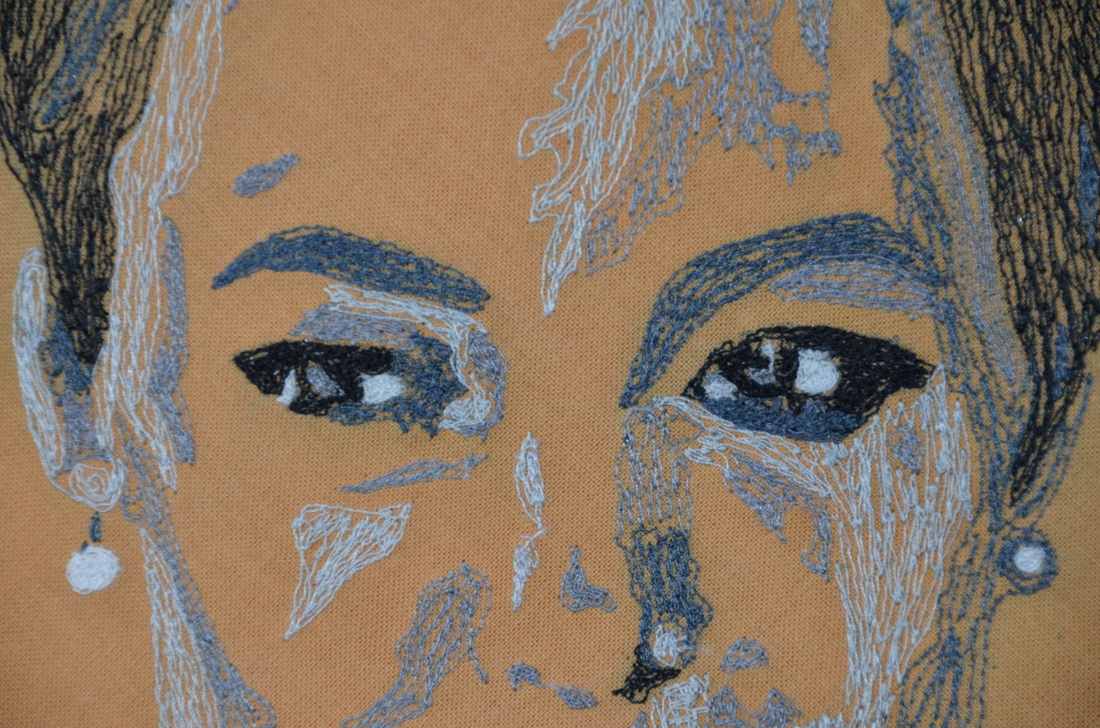
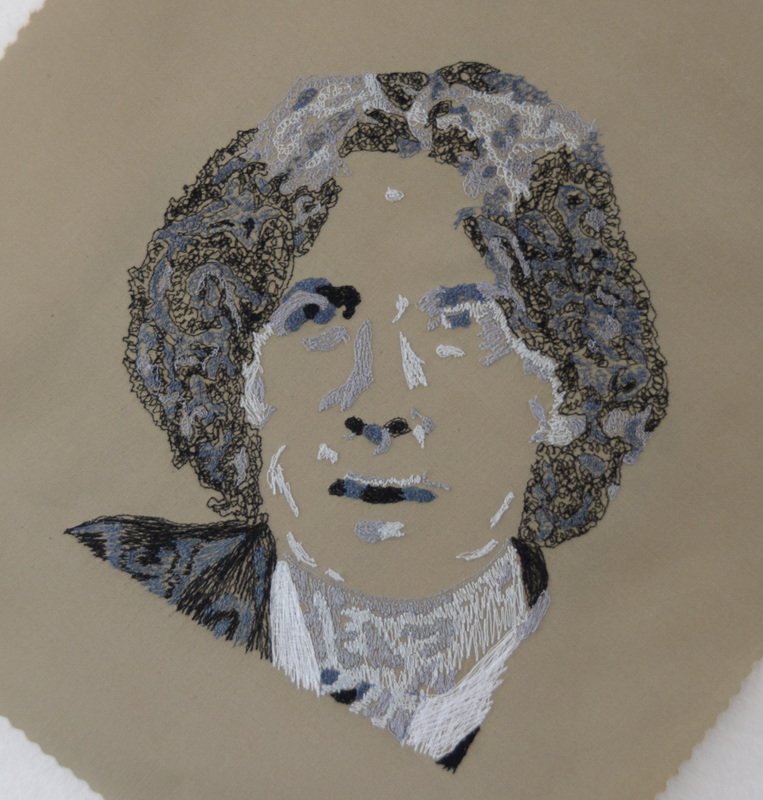
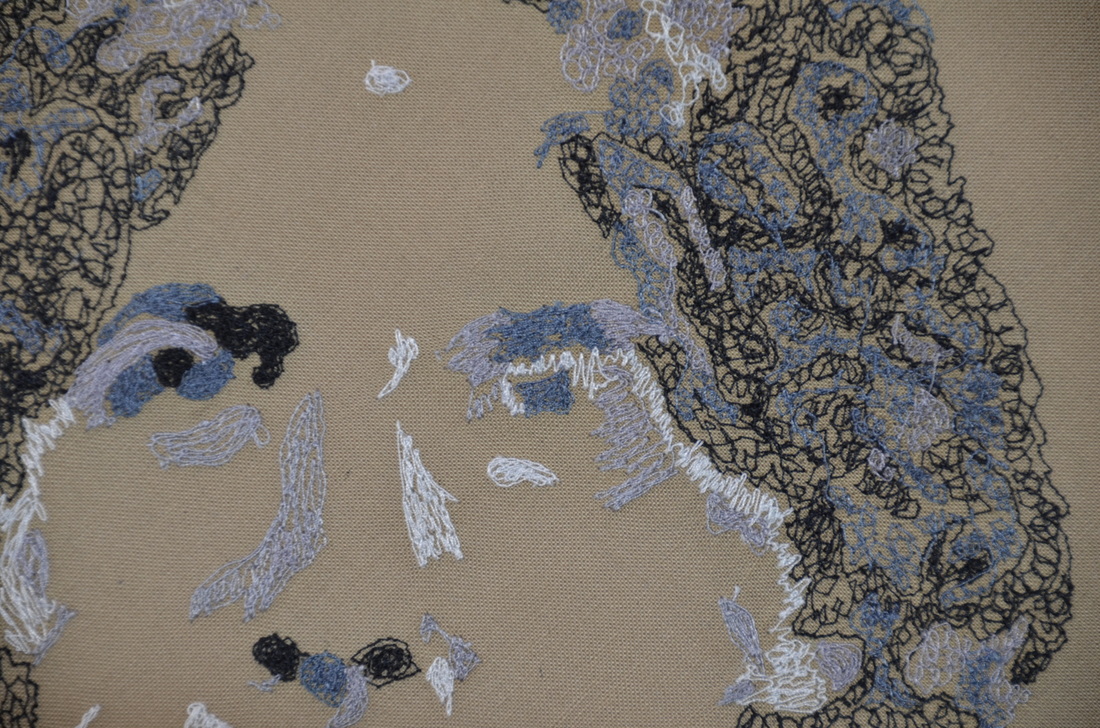

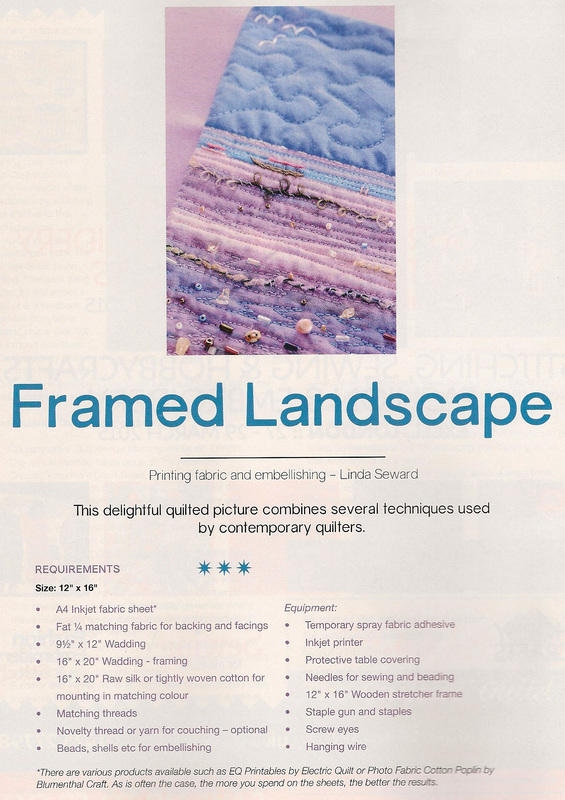
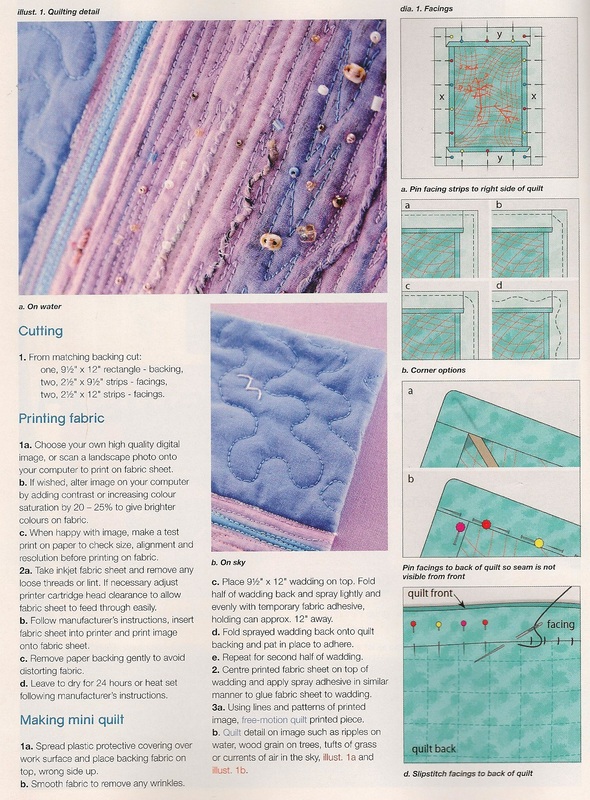
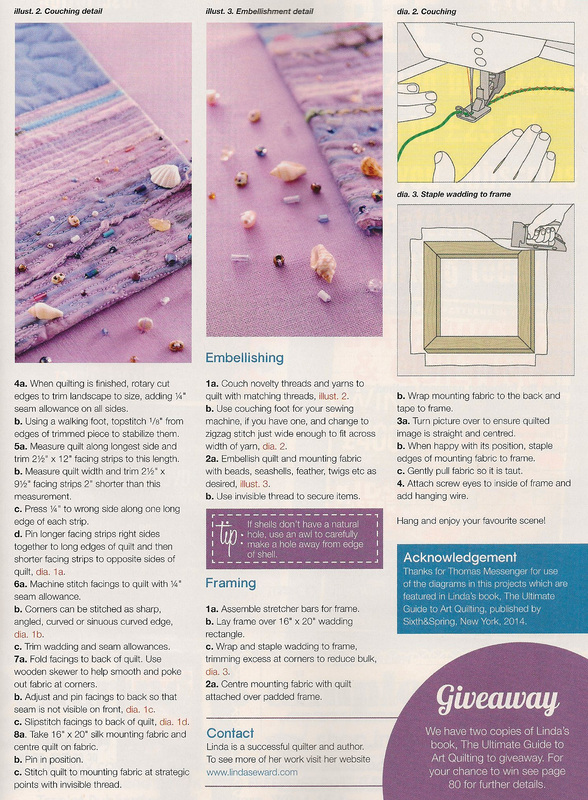
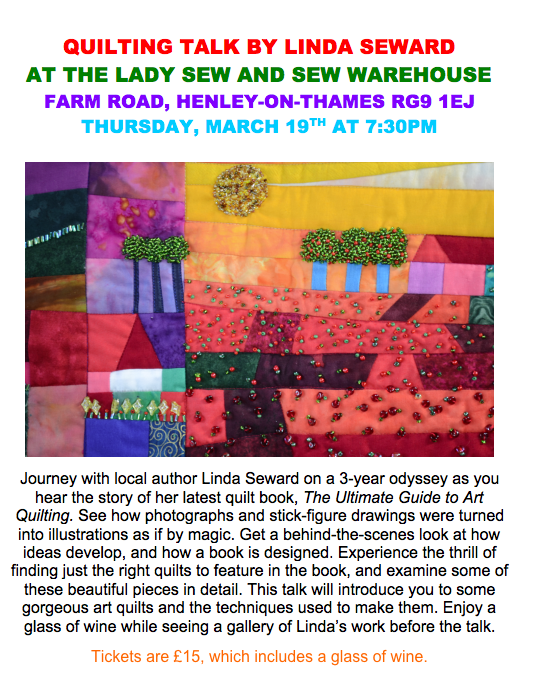
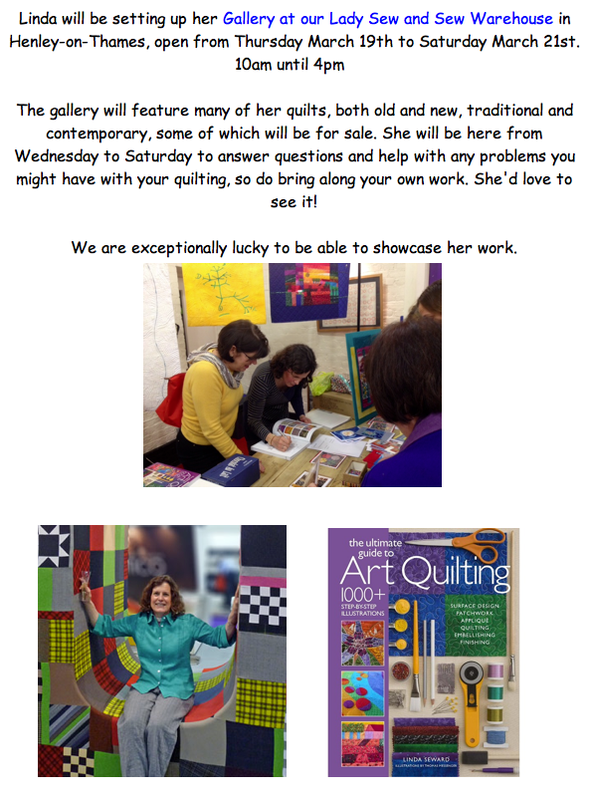
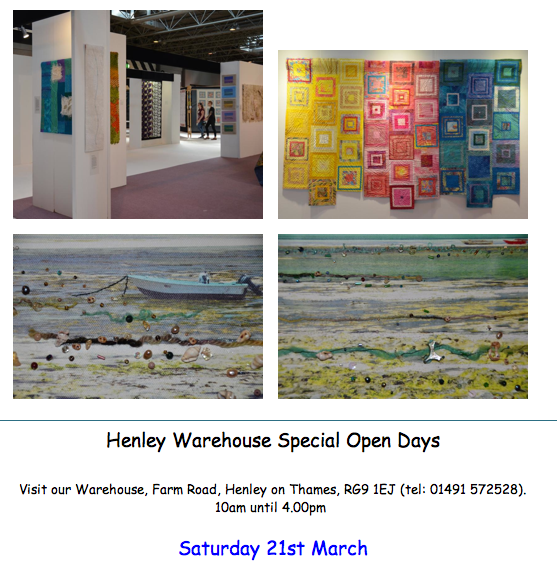
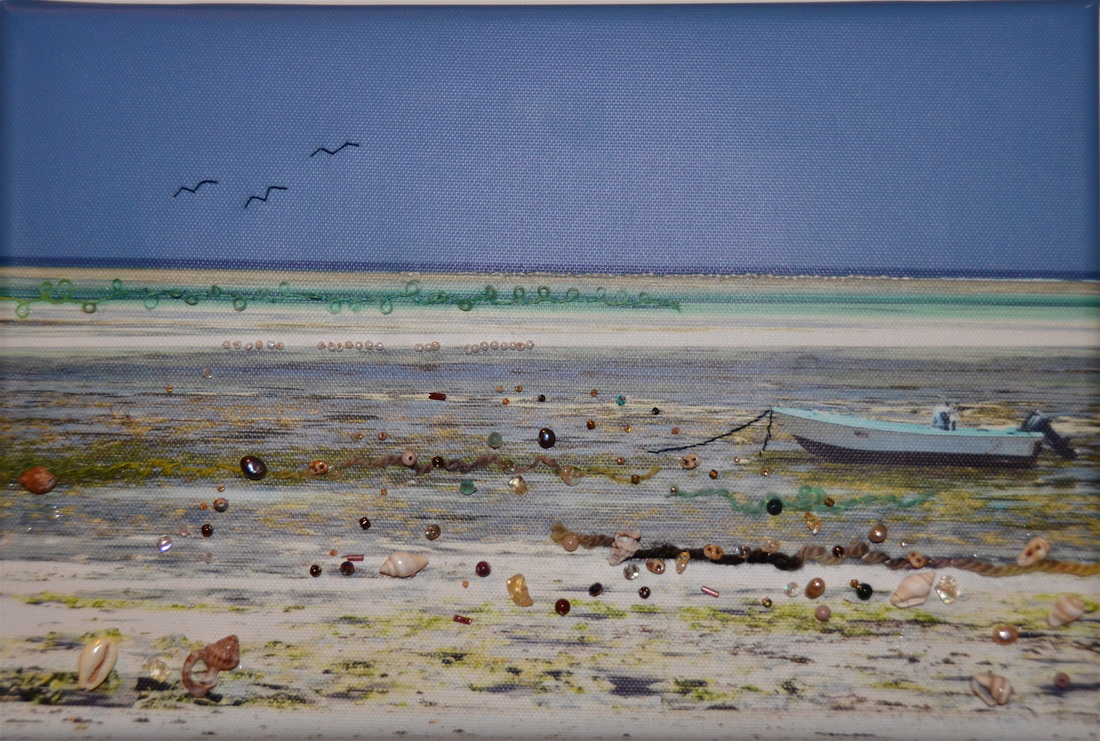
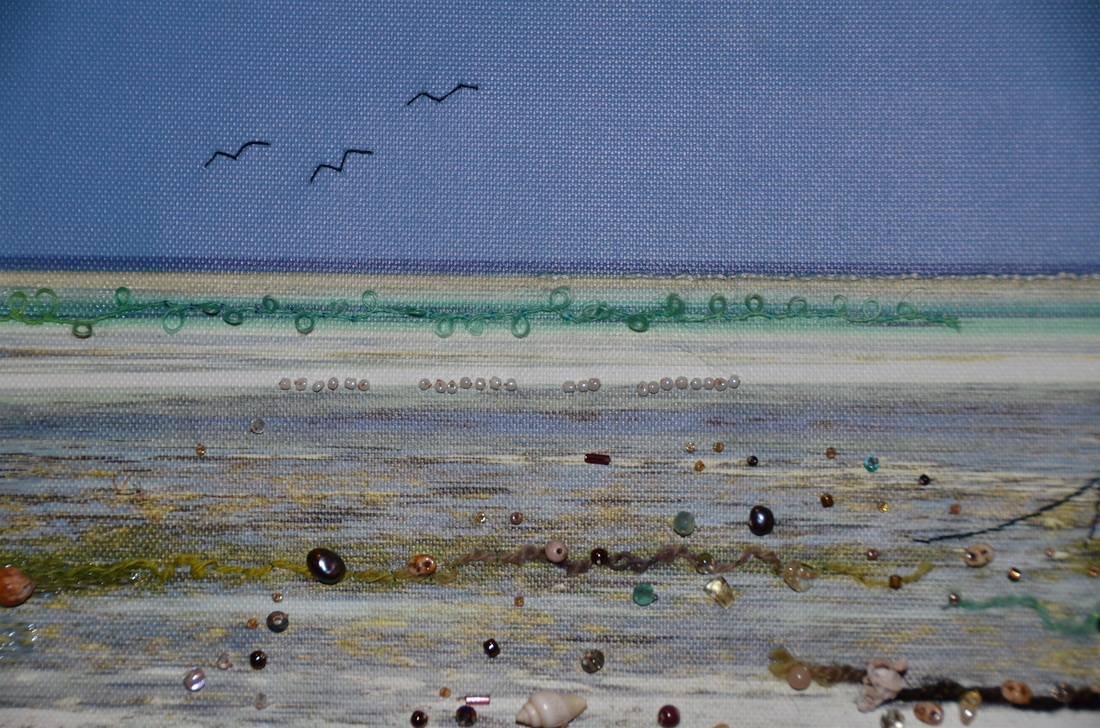
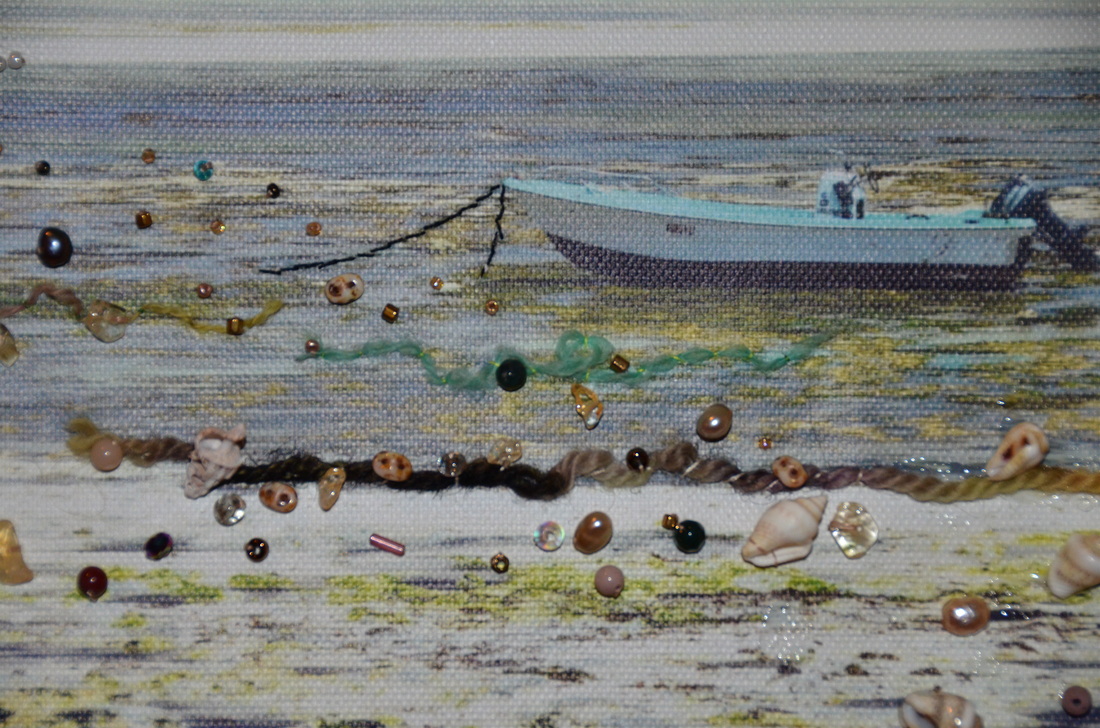
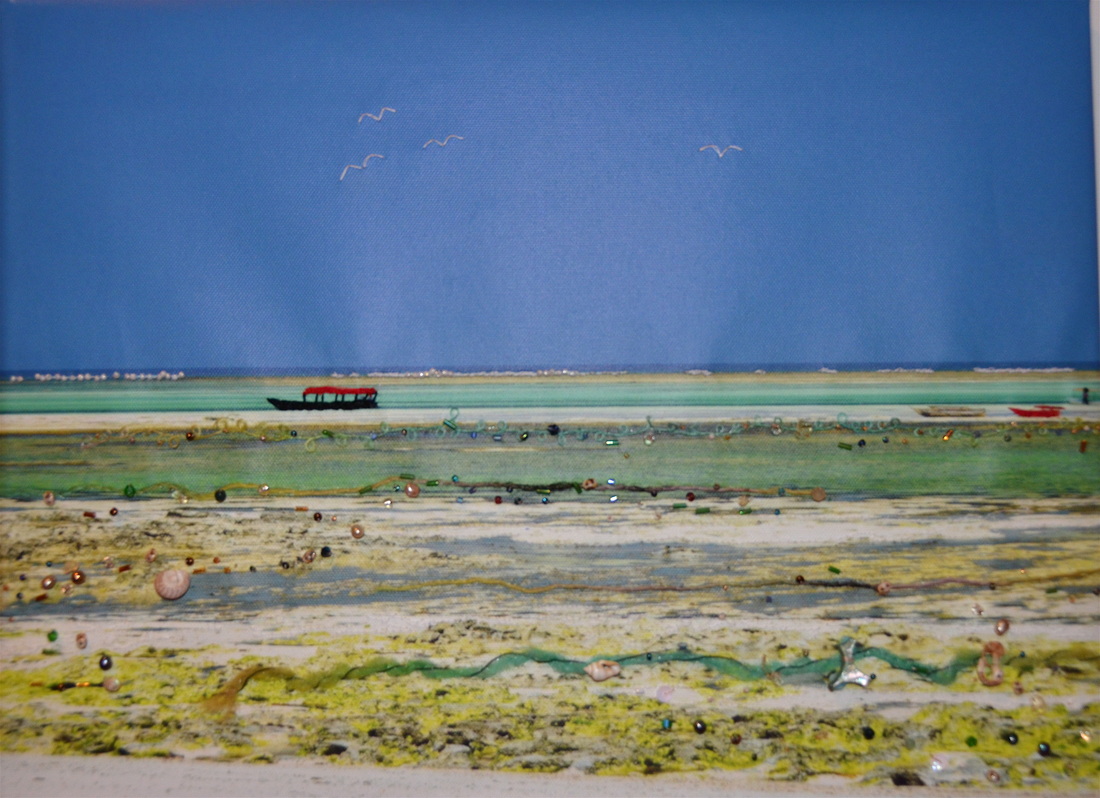
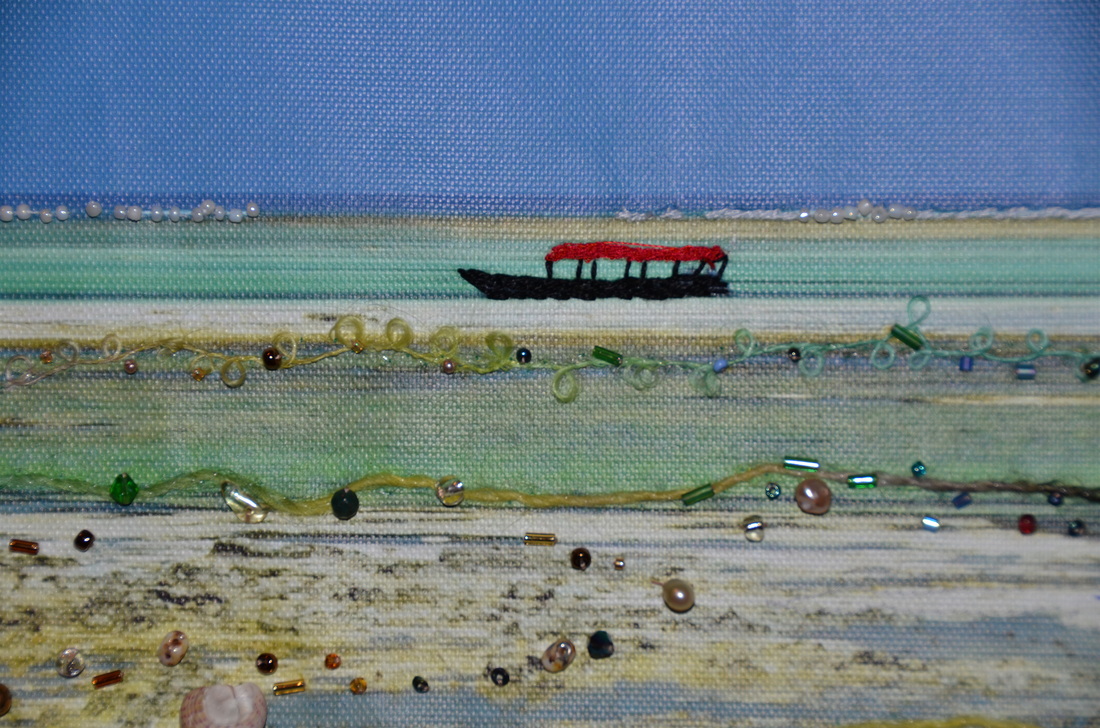
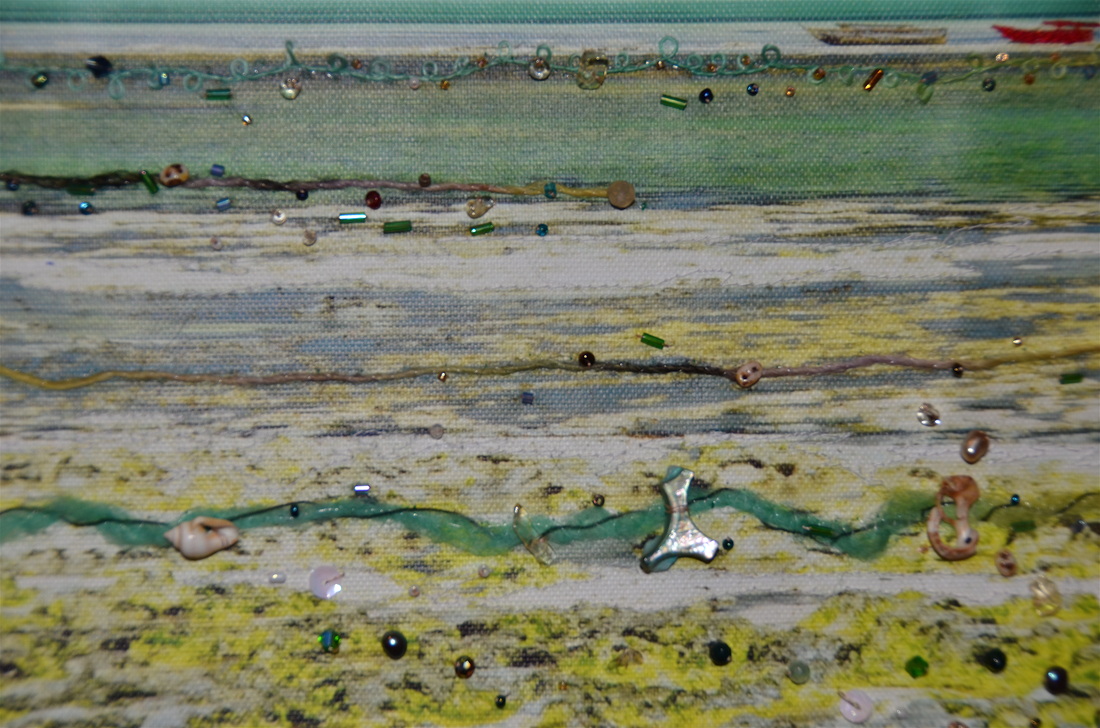
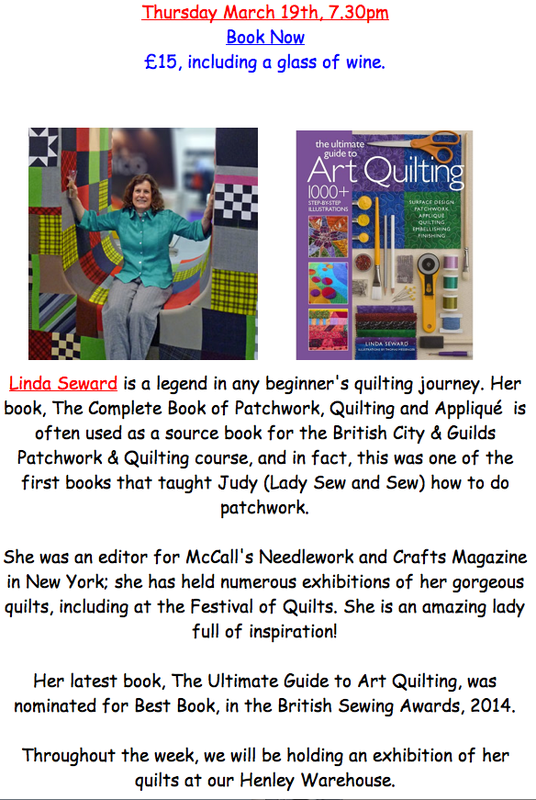

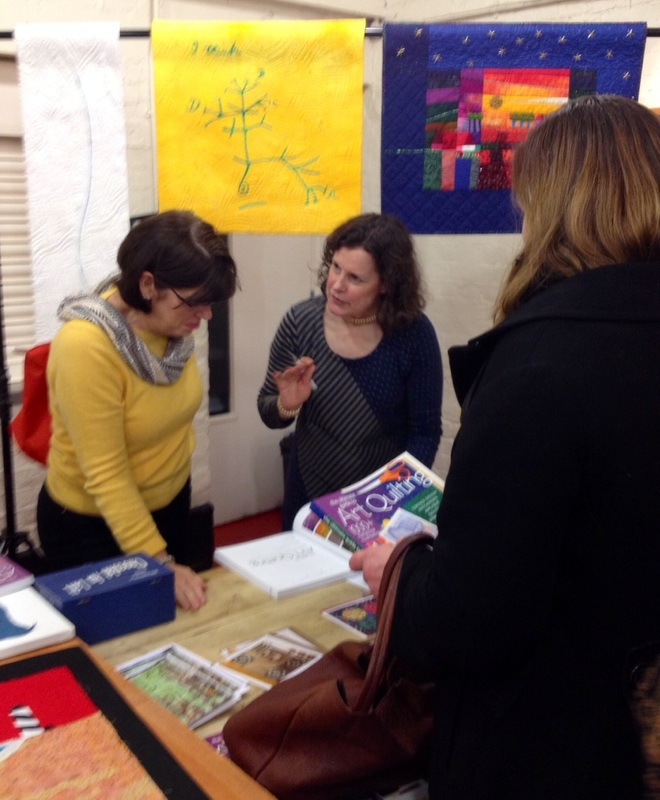
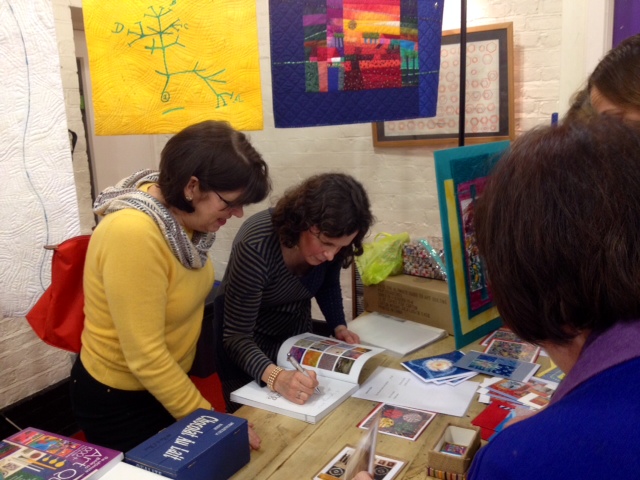
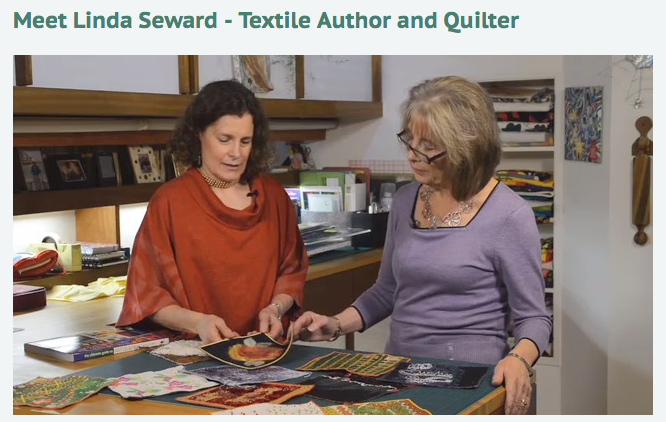
 RSS Feed
RSS Feed